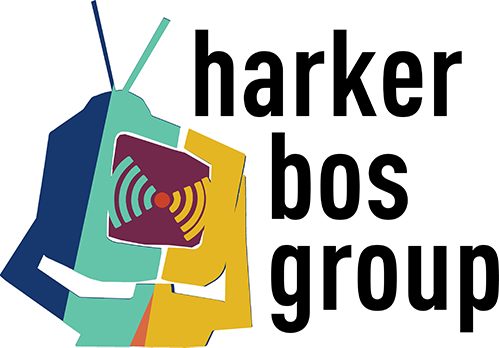Weekly Roundup – Week of September 19, 2022
Sports Media & Sports Betting News
Futures Bet – While Opening Lines Widely Vary, Analysis Of 8 Key States Show Top Players FanDuel And DraftKings Are Eventually The Biggest Overall Online Winners
“Caesars famously handled the most bets of any sportsbook in the first month of legal online wagering in New York in January, taking 38% of a record $1.68 billion, the most money ever wagered in a state in a single month.
It took less than 30 days for FanDuel to vanquish Caesars. In regulator filings released last week, FanDuel held a 43% share in the state in August, while Caesars had fallen to 13%, third behind DraftKings.
The Chicago-based sportsbook now known as BetRivers was one of only two operators licensed to take bets in the first month in Pennsylvania in 2019 and had its home state of Illinois to itself for its first six weeks of online operation in 2020, giving it starting points of 66% and 100% of handle, respectively.
After six months in each state, BetRivers was down to 20%. The latest reports have it at 9% in Pennsylvania and 11% in Illinois, its two strongest performing markets, yet well behind FanDuel, which leads in both.
When Penn National’s Barstool Sportsbook launched in 2021 in Michigan, where its brand adorned one of three Detroit casinos, it trailed FanDuel by seven percentage points in a dogfight that had BetMGM at 23% and DraftKings at 19% after the first eight days of betting at the end of January.
Barstool fell to 14% and fourth place the following month in Michigan. This past June, it was at 10% overall and in fifth place in online handle, behind Caesars. FanDuel and DraftKings lead in Michigan, followed by BetMGM.
The pace may vary, but the sportsbook pecking order eventually shakes out the same, state after state after state.”
Read more on SportsBusinessJournal.com
Private Equity’s Latest Target: Live Sports
“Some might think the glamour and competition of owning a sports team has attracted investors like Silver Lake, CVC Capital Partners, and Clearlake Capital Group.
Instead, it is the value of live sports content, and the rights to it, that has helped generate interest in the sector.
This week, Ares Management (ticker: ARES) announced its first dedicated fund focused on investing in sports teams, leagues, and franchises, as well as media and entertainment companies.
Ares spent 18 months marketing for the pool, which raised $3.7 billion, including $2.2 billion of equity commitments and $1.5 billion of anticipated leverage and related transaction vehicles, according to a Sept. 15 statement.
…
With its sports, media and entertainment, or SME, fund, managed out of its direct lending business, Ares will seek to invest in European and U.S. soccer clubs, Affolter said. It will also target Major League Baseball, the National Hockey League, rugby, and other sports.
The firm will provide debt—senior, junior and mezzanine loans—to teams and companies, Affolter said. Ares will also seek to take minority stakes, making preferred and common equity co-investments, he said. (With preferred equity, investors are senior to the common equity, but junior to the debt.)”
As More States Legalize The Practice, 19% Of U.S. Adults Say They Have Bet Money On Sports In The Past Year
“Around one-in-five U.S. adults (19%) say they have personally bet money on sports in some way in the last 12 months, whether with friends or family, in person at a casino or other gambling venue, or online with a betting app, according to a new Pew Research Center survey.
The survey comes more than four years after the Supreme Court effectively legalized commercial sports betting in the United States. As of this month, 35 states and the District of Columbia have authorized the practice in some form, with Massachusetts becoming the latest state to do so in August.
A bar chart showing that betting with friends and family is the most commonly reported form of sports gambling in the U.S.
Despite the growth of commercial sports betting in the wake of the Supreme Court’s 2018 ruling, the most common way that Americans bet on sports is with friends or family, according to the Center’s survey, which was fielded July 5-17 among 6,034 adults. Some 15% of adults say they have bet money on sports with friends or family in the last 12 months, such as in a private betting pool, fantasy league or casual bet. Smaller shares say they have bet money on sports in person at a casino, racetrack or betting kiosk in the past year (8%) or that they have done so online with a betting app, sportsbook or casino (6%). All told, 19% of adults have bet money on sports in at least one of these ways in the past year.”
Politics + Media + Radio News
Will The Polls Overestimate Democrats Again?
“As Democrats’ prospects for the midterms have improved — they’re now up to a 71 percent chance of keeping the Senate and a 29 percent chance of retaining the House, according to the 2022 FiveThirtyEight midterm election forecast1 — I’ve observed a corresponding increase in concern among liberals that the polls might overestimate Democrats’ position again, as they did in 2016 and 2020. Even among commenters who are analyzing the race from an arm’s-length distance, there sometimes seems to be a presumption that the polls will be biased toward Democrats.
…
My contention is that while the polls could have another bad year, it’s hard to know right now whether that bias will benefit Democrats or Republicans. People’s guesses about this are often wrong. In 2014, for example, there was a lot of discussion about whether the polls would have a pro-Republican bias, as they did in 2012. But they turned out to have a pro-Democratic bias instead.
There’s one important complication to this, however. Our model actually assumes that current polling probably does overstate the case for Democrats. It’s just not necessarily for the reasons people assume.”
Read more on FiveThirtyEight.com
Why Are Podcast Studios Suddenly Obsessed With Video?
“For a medium so associated with stock photos of headphones and earbuds over the years, it might come as a surprise to casual observers that the podcast business seems to be obsessed with video of late.
Last month, YouTube unveiled a dedicated hub page for podcasts, which primarily accommodates personality-driven talk shows that upload tapings of their recording sessions onto the platform to potentially reach more people. That, of course, comes as something of a formalized response to Spotify’s relatively nascent efforts to compete in the digital-video category: Just pull up the show page for The Joe Rogan Experience or Call Her Daddy on the app and you’ll see what I mean.
…
It’s not hard to intuit what’s driving this current moment around podcasting and video. Podcasting’s growing popularity in recent years has meant increasing participation by creators who’ve built followings in visual-first formats, including YouTube. And many of them, looking to diversify away from pure reliance on the opaque algorithm of YouTube (or some other platform), saw the rising but still-early profile of podcasting as a fruitful space to expand into. (That diversification has long been happening the other way around, too: note that chat-cast publishers like Crooked Media are plenty active on YouTube as well.) Spotify spotted this, and seeing an opportunity to tap into the already established and wealthy digital video market, not to mention the intertwined (highly remunerative) influencer economy. Knowing that they had already secured a strong audio-video hybrid figure in Joe Rogan, the company began to formally push their way into the format.”
The Kaleidoscope: Tracking Young People’s Relationships With News
“1. For young people, news can be ‘narrow’ or ‘broad’. Young people make a distinction between ‘the news’ as the narrow, traditional agenda of politics and current affairs and ‘news’ as a much wider umbrella encompassing topics like sports, entertainment, celebrity gossip, culture, and science. ‘The news’ is associated with mainstream, traditional media brands, who are expected to act impartially and objectively, even if there are doubts that this is achievable. ‘News’ is topically broader and afforded more tonal latitude. Alternative media is felt to operate better here.
2. Some young people selectively avoid ‘narrow,’ ‘serious’ news – at least some of the time. Rather than simply avoiding news, there is ‘news to be avoided’ – often to guard mental health. Because of this, young people seem to engage more with ‘news’ than ‘the news.’ Avoidance of ‘narrow’ news has implications for mainstream brands, who are felt to operate primarily at the ‘serious’ end of the spectrum.
3. Many factors – both contextual and personal – influence a young person’s news consumption preferences and behaviours. The proliferation of choice driven by the social mobile web results in as many pictures of young people’s news consumption as there are young people, though this report discerns a typology of hobbyist/dutiful news consumers, main eventers, and the disengaged. Each group differs in terms of their motivations for consuming ‘narrow’ news, how they encounter it, their brand considerations, and their content preferences.”
Read more at Reuters Institute
Recent Blogs on HarkerBos.com
HBG Media Minute: Radio Presets Are Alive and Well
In the latest installment of the Harker Bos Group Media Minute, Sean dives into recent research exploring the current use of radio presets in cars.


